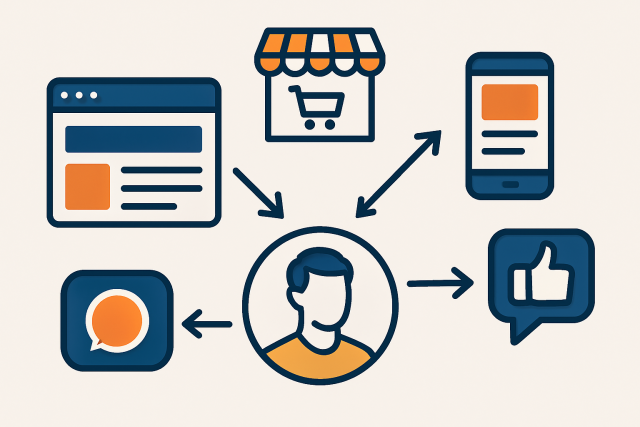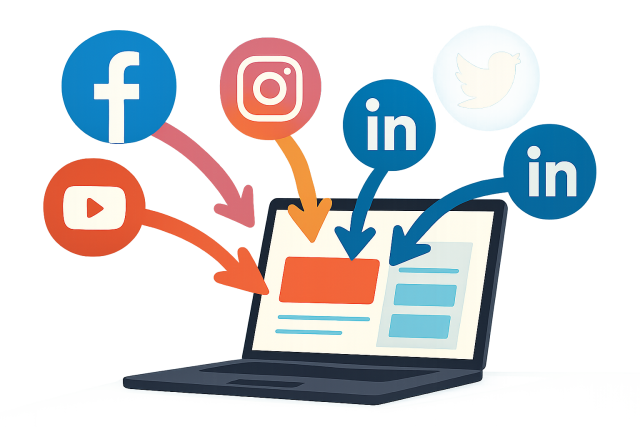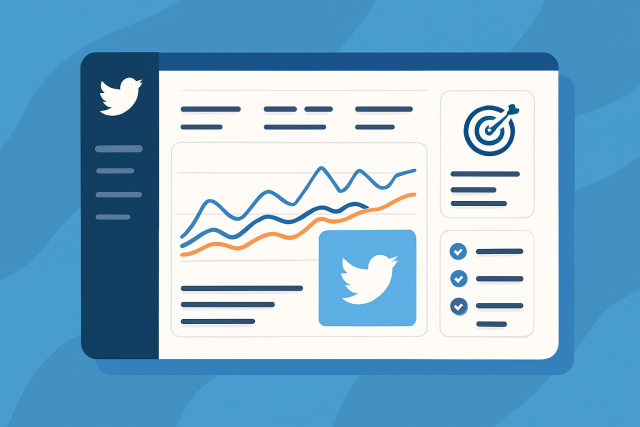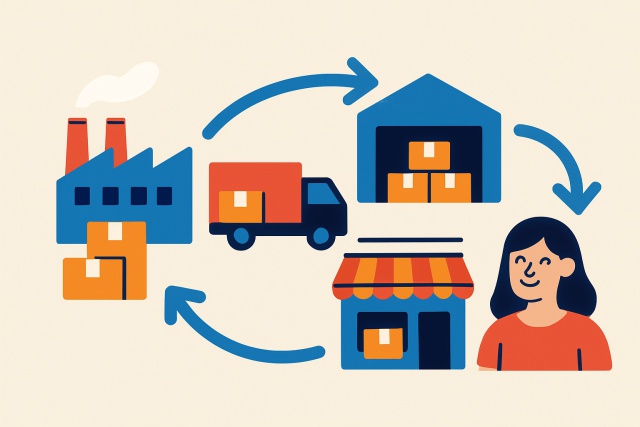Choosing Distribution Channels That Fit Your Audience


Choosing the right distribution channels is absolutely key when it comes to connecting with and genuinely engaging your target audience. These channels are basically the paths your content travels on to reach viewers, and they have a big say not just in your marketing results but also in the overall vibe and impression people get of your brand.
Understanding Distribution Channels The Essentials and the Many Flavors They Come In
Distribution channels are the platforms or mediums you use to get your content in front of an audience. They are important in content marketing because they determine where and how your messages land with people. Usually these channels break down into three categories: owned, earned and paid.
- Owned channels like your company websites and blogs put you firmly in the driver's seat and let you shape your content to showcase your brand exactly how you want.
- Earned channels such as word-of-mouth, social shares and media coverage build genuine trust and grow your reach without you having to break a sweat.
- Paid channels like advertisements and sponsored content give you that spotlight moment with targeted visibility because sometimes a little investment gets you further down the road.
- Social media platforms act as versatile distribution hubs that blend organic vibes with paid strategies to keep your presence lively and engaging.
- Email marketing is like the warm handshake of digital communication, nurturing relationships and sparking direct connections through messages tailored for your audience.
- Content syndication spreads your message far and wide by sharing your work on third-party sites, expanding your footprint without extra heavy lifting.
- Influencer partnerships ramp up authentic storytelling by leaning on trusted voices within specific niches and add a personal touch that resonates.
- Affiliate marketing sweetens the deal by rewarding partners with commissions for promoting your content and helps you grow your audience with a little help from your friends.
Owned channels put you firmly in the driver’s seat by giving you full control but often demand significant time and effort to build and keep your audience interested. Earned channels do wonders for boosting credibility and casting a wider net but can sometimes be unpredictable. Paid channels offer quicker growth and laser-focused targeting but require you to watch your budget carefully.
Understanding Your Audience The Secret Sauce to Picking the Perfect Channel
Getting a solid grip on your audience's demographics and interests is absolutely vital when picking the right distribution channels.
Pinpoint your target demographics like age, gender, location and income because this helps you tailor your content channels more effectively.
Take a good look at how your audience consumes content, including the types of media they prefer and when they’re most likely to tune in.
Dig into which devices and platforms they lean on, whether it’s mobile, desktop or their favorite social networks since no two audiences are the same.
Get a solid grasp on their buying habits and what motivates them so your channel messaging not only hits but truly resonates with what users want.
Gather feedback through surveys and social listening. This is the best way to double-check your assumptions and uncover fresh, surprising insights.
Digging into creating a detailed profile, it’s usually a smart move to lean on analytics platforms like Google Analytics to get the lowdown on user behavior. Social listening tools help keep an ear on the chatter and good old surveys gather direct feedback straight from the horse’s mouth.
Matching Distribution Channels to What Your Audience Really Wants
Once you’ve got your audience data in hand, connecting those insights to the right distribution channels usually gives your engagement and conversions a nice little bump.
| Audience Characteristic | Recommended Distribution Channel(s) | Rationale / Example |
|---|---|---|
| Young adults active on social media | Instagram, TikTok, YouTube | Visual and video content really grabs attention; plus, influencers usually have a knack for spreading the word far and wide |
| Professionals seeking detailed info | LinkedIn, company blogs, webinars | Trusted, in-depth formats work wonders for building solid B2B connections that stand the test of time |
| Email-oriented shoppers | Email campaigns, newsletters | Direct messaging keeps the conversation personal and opens up great opportunities for some well-timed upselling |
| Mobile-first users | Mobile-optimized social ads, apps | A smooth, hassle-free smartphone experience tends to crank up engagement nicely |
| Niche hobbyists | Forums, specialized content syndication | Targeted community channels usually help boost both relevance and trust — it’s all about speaking their language |
A B2B technology company struck gold by leaning on LinkedIn and webinars to educate and convert those professional buyers. Meanwhile, a consumer retail brand cleverly tapped into Instagram influencers and email marketing to boost awareness and nudge sales upward.

Graphic illustrating how different audience profiles align with specific distribution channels
Assessing Channel Effectiveness Using Metrics and KPIs That Actually Matter
Tracking key performance indicators is the secret sauce to figuring out which channels are actually pulling their weight. Metrics like reach and engagement paint a clear picture of how each channel usually performs.
- Impressions and reach give you a good sense of how many eyeballs caught a glimpse of your content.
- Click-through rate (CTR) reveals the slice of viewers who took the bait and clicked your links.
- Engagement rate captures likes, shares, comments, and other interactions that show people care.
- Conversion rate lets you know how many people followed through and completed the action you wanted.
- Cost per acquisition (CPA) breaks down what it costs you for each successful conversion — no mysteries there.
- Return on investment (ROI) helps you see whether your spending on the channel is paying off or just burning a hole in your pocket.
Leveraging tracking systems with UTM parameters and analytics dashboards and CRM integrations lets marketers scoop up real-time data like pros. Making heads or tails of this flood of info requires a solid understanding of each channel’s quirks and the business’s goals. This combo comes in handy when fine-tuning strategies. It helps with reallocating resources or giving the messaging a little nudge for channels that seem to be dragging their feet.
Crafting a Smart and Effective Multi-Channel Distribution Strategy
Using a handful of distribution channels thoughtfully can really help you reach a broader audience and open up more doors to connect.
Set clear goals for each channel that truly align with your overall marketing objectives—no vague targets here.
Tailor your content and messaging so they vibe perfectly with the style and quirks of each platform.
Plan your publishing times with care to avoid stepping on your own toes and to give your efforts the best shot at success.
Nudge people to interact across channels, like tying your social media posts to your email newsletters—it’s all about creating that seamless dance.
Keep a close eye on those performance metrics, and don’t be shy about tweaking your strategies and resources based on what the data’s whispering.
Managing multi-channel distribution can be quite the juggling act with challenges like keeping messages consistent and making the most of limited resources while tracking attribution across a maze of different channels. Typically, the game plan involves careful planning and relying on a centralized content calendar. It also leans on integrated analytics tools to pull all the data together.
Finding the sweet spot between consistency and customization across channels is often the secret sauce to crafting a seamless yet genuinely personalized experience for your audience. It’s what ensures every single interaction not only adds value but also quietly reinforces the brand’s unique identity, day in and day out. – Digital Marketing Expert
Planning Budgets and Allocating Resources for Distribution Channels Getting It Just Right
Estimating costs and allocating resources involves focusing on expenses unique to each channel—things like ad spending, content creation, platform fees and labor. It’s smart to focus on the channels that really count from a strategic standpoint. Ramp up investment where the returns shine brightest and scale back on the weaker spots.
| Channel | Typical Cost Factors | Resource Needs | ROI Potential |
|---|---|---|---|
| Social Media | Spending on ads, whipping up content, paying influencers | Community managers, designers | Often pretty high when campaigns hit the bullseye |
| Email Marketing | Subscription fees, wrangling mailing lists | Copywriters, email marketing experts | Usually very high thanks to that direct line to inboxes |
| Paid Search Ads | Cost per click bids, fees for keeping campaigns running smoothly | PPC specialists, data analysts | Can range from middle of the road to high, with the right tweaks |
| Content Syndication | Licensing payments, platform usage charges | Content strategists, coordination staff | Generally medium, a handy tool for broadening your reach |
| Influencer Marketing | Partnership fees, commissions | Relationship managers, content coordinators | Strong returns in certain niche markets you might want to tap into |
| Affiliate Marketing | Commission fees, software for tracking those all-important sales | Affiliate managers | High ROI mostly driven by good old performance |
To squeeze the most out of your budget without skimping on quality, focus on channels that deliver clear measurable results and keep fine-tuning your creatives and targeting along the way.
Case Studies Offering Real-World Examples of Effective Distribution Channel Decisions That Hit the Mark
Across many industries the most successful companies really drive home the importance of syncing their distribution channels with what their audience wants. B2B businesses tend to lean heavily on LinkedIn and webinars—places where professionals hang out and learn. Retail brands put their energy into social media and email to catch customers where they scroll every day. Meanwhile non-profits get creative by sharing their stories through earned media and influencers who add a personal touch.
- A B2B technology company leaned into LinkedIn posts and hosted laser-focused webinars to keep industry pros in the loop while ramping up lead generation. It’s the kind of smart, straightforward approach that just clicks.
- A consumer retail brand joined forces with Instagram influencers and rolled out email campaigns designed to boost brand love and turn that buzz into real sales. They really knew how to stir the pot and keep customers coming back for more.
- A non-profit organization cleverly leveraged earned media alongside heartfelt influencer stories to strike a chord with the community, inspiring support and gently nudging people to open their hearts.
- A digital publishing platform smartly broadened its reach by syncing its own blog content with sharing partnerships on other sites. It’s a neat way to bring new eyes on board without breaking a sweat.

Visual representation of varied industries successfully using tailored distribution channels
Actionable Steps to Help You Nail Down the Best Distribution Channels Today
Dig into your audience to get a clear picture of their demographics and behaviors. Think of it as getting to know your ideal coffee shop regular before you start brewing.
Make a solid list of all the distribution channels that fit your industry and content type. It’s like assembling your toolkit before the job begins.
Compare these channels with your audience insights and overall marketing goals because alignment here is everything.
Give a few channels a whirl with pilot campaigns to see how well they engage and convert. Think of it as dipping your toes in the water before diving in.
Analyze the results from these tests using key performance indicators and don’t be afraid to tweak your approach. Sometimes the numbers tell a surprising story.
Zero in on the channels that perform well, ramp up your investment and keep fine-tuning your content based on what the data is whispering or shouting.
Taking a flexible, data-focused approach to choosing distribution channels lets marketers pivot on the fly.
Frequently Asked Questions
How do I know if a distribution channel is right for my audience?
Start by digging into your audience’s demographics and how they like to consume content. Look at which platforms they naturally gravitate toward. Tools like Google Analytics and social listening are lifesavers for this kind of detective work. I’ve found it’s best to test the waters with small campaigns across a few channels and keep a close eye on engagement and conversion rates. That way, you can figure out which channels really hit home with your target crowd.
What’s the most cost-effective distribution channel for small businesses?
Owned channels like blogs and email newsletters along with organic social media usually come out on top for budget-friendliness since they don’t demand a big upfront investment. Earned channels such as word-of-mouth or teaming up with micro-influencers can also give your reach a boost without draining your wallet—provided your content is interesting enough to get people talking and sharing.
How can I balance consistency and customization across multiple channels?
Keep your core brand message rock solid but don’t be afraid to tweak the tone, format and timing to fit what works best on each platform. A content calendar is your trusty sidekick here helping you orchestrate unified campaigns. Plus, repurposing key content like turning a blog post into bite-sized social snippets not only saves you time but keeps your message fresh and relevant.
What metrics should I track to evaluate channel performance?
Zero in on key metrics such as reach, engagement (likes, shares, click-through rates), conversion rates and cost per acquisition. Tools that use UTM parameters and CRM integrations can be real game-changers for tracking this data. They help you pinpoint which channels give you the best bang for your buck.
Can I rely solely on organic distribution channels?
Organic channels like SEO and social media are reliable for long-term growth but usually play the slow and steady game. Mixing them with targeted paid tactics such as ads or sponsorships often speeds up your reach nicely. In my experience, it’s smart to lean on organic methods for building trust over time and bring in paid channels when you’re aiming for faster results.
How often should I reassess my distribution channel strategy?
Take a good look at your performance every quarter or after major campaigns. Audience habits and platform algorithms change on a dime, so keeping a flexible mindset is key. Try out new channels, shift budgets based on fresh data and tweak your content to match current trends. Staying adaptable is half the battle.




